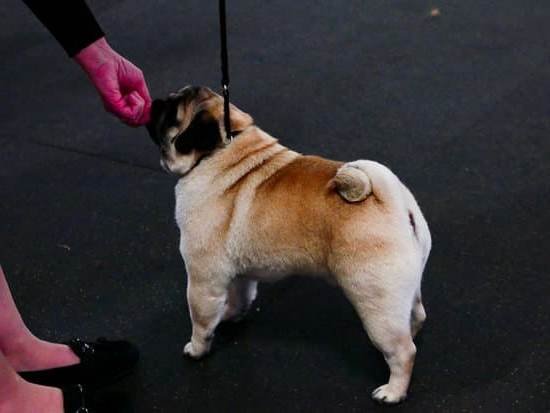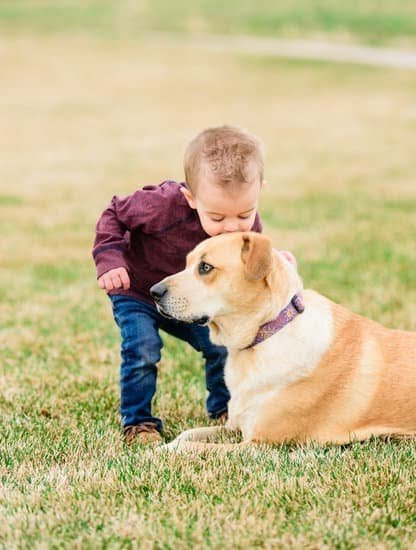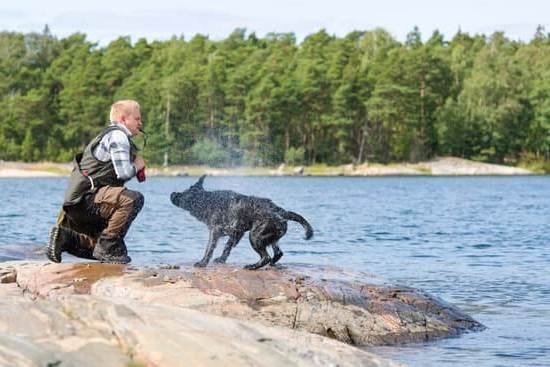House training an indoor dog can be a challenging but essential task for pet owners. Teaching your dog to relieve themselves in a designated area indoors is crucial for maintaining a clean and comfortable living environment. In this article, we will discuss the importance of house training for indoor dogs and provide you with a comprehensive guide on how to effectively house train your furry friend.
The key to successful house training lies in creating a consistent routine for your dog. Establishing a regular feeding schedule and taking your dog out for bathroom breaks at specific times will help them understand where and when to relieve themselves. Additionally, setting up a designated potty area in your home can be an effective method for house training.
Positive reinforcement plays a vital role in encouraging good bathroom behavior in your indoor dog. By using treats and praise, you can reinforce their understanding of where they should go to relieve themselves. It’s also important to address accidents promptly and use effective cleaning strategies to prevent repeat incidents. Utilizing crate training as a tool for house training and maintaining consistency throughout the process are also crucial factors that will be covered in this comprehensive guide.
Creating a Routine
Establishing a consistent routine is crucial when house training an indoor dog. This not only helps the dog understand and anticipate when it’s time to relieve themselves, but it also makes the training process easier and more efficient for both you and your pet.
Feeding Schedule
One of the first steps in creating a routine for your indoor dog is to establish a regular feeding schedule. By feeding your dog at the same times every day, you can predict when they will likely need to go to the bathroom. Typically, adult dogs should be fed twice a day, while puppies may require three or four meals, depending on their age and breed.
Bathroom Schedule
In addition to a consistent feeding schedule, it’s essential to take your dog outside for bathroom breaks at regular intervals. Puppies may need to go out as frequently as every 30 minutes to an hour during the day, while adult dogs generally need to go out every 4-6 hours. It’s important to take them out first thing in the morning, right after meals, before bedtime, and any other time that they show signs of needing to go.
By establishing and sticking to a routine for both feeding and bathroom breaks, you’ll provide structure for your indoor dog and set them up for successful house training. Remember that consistency is key, so try your best to stick to the schedule each day until your furry friend has fully grasped their new potty routine.
Setting Up a Designated Potty Area
Choosing the Right Spot
When setting up a designated potty area for your indoor dog, it’s important to choose the right spot in your home. Look for an area that is easily accessible to your dog, but also away from their living and eating space. Whether you choose to use pee pads, artificial grass patches, or a litter box, make sure it is placed in a quiet and low-traffic area of your home.
Method for Your Dog to Relieve Themselves Indoors
The method you choose for your dog to relieve themselves indoors will largely depend on their breed, size, and individual preferences. Some dogs may prefer pee pads, while others may be more inclined to use an artificial grass patch or litter box. It’s important to observe your dog’s behavior and habits to determine which method will work best for them. Additionally, consider using pheromone sprays or attractants to encourage your dog to use the designated potty area.
Consistent Training and Maintenance
Once you have chosen the spot and method for your indoor dog’s designated potty area, consistent training and maintenance are crucial. Use positive reinforcement such as treats and praise when they successfully use the designated area.
If accidents occur outside of the designated area, clean up the mess thoroughly with an enzymatic cleaner to remove any lingering scent that may attract your dog back to that spot. With patience and consistency, your dog will learn to reliably use their designated potty area indoors.
Positive Reinforcement
House training an indoor dog can be a challenging task, but using positive reinforcement can make the process more effective and rewarding for both you and your pet. By utilizing treats and praise, you can encourage good bathroom behavior in your dog and make the house training process easier.
Using Treats
One of the most effective ways to encourage good bathroom behavior in your indoor dog is by using treats as a reward. Whenever your dog successfully eliminates in the designated potty area, immediately give them a small treat as a reward. This positive reinforcement will help them associate using the potty area with something positive, making them more likely to continue using it in the future.
Providing Praise
In addition to treats, providing verbal praise can also be a powerful tool for encouraging good bathroom behavior in your indoor dog. Whenever your dog uses the designated potty area, be sure to offer plenty of verbal praise, such as saying “good boy” or “good girl” in a happy and enthusiastic tone. Dogs respond well to vocal affirmation, and this positive reinforcement will make them more inclined to repeat the desired behavior.
Timing Is Key
When using treats and praise for positive reinforcement, timing is crucial. It’s important to give your dog their treat or praise immediately after they’ve eliminated in the designated potty area. This way, they’ll quickly associate their action with the reward, reinforcing the desired behavior. Consistency is also key – always provide treats and praise every time your dog successfully uses the potty area to ensure they understand what is expected of them.
Handling Accidents
House training an indoor dog is not always smooth sailing, and accidents are inevitable during the process. It’s important to have effective strategies for cleaning up and addressing accidents in the house to prevent any setbacks in your training efforts. Here are some tips for handling accidents:
- Act quickly: When you catch your dog in the act of relieving themselves indoors, interrupt them with a firm “no” and immediately take them to their designated potty area.
- Clean thoroughly: Use an enzymatic cleaner specifically designed for pet messes to completely remove any odor from the accident site. This will help prevent your dog from being drawn back to the same spot.
- Reinforce positive behavior: After cleaning up the accident, continue to use positive reinforcement when your dog goes potty in the right place. This will help them understand where they should be relieving themselves.
In addition to these strategies, it’s important to keep a close eye on your dog’s behavior and make adjustments to your routine or designated potty area as needed to set them up for success.
Remember, accidents are a normal part of the house training process, so it’s important not to get discouraged. With patience and consistency, you can work through these challenges and successfully train your indoor dog.
Crate Training
When introducing your dog to the crate, it’s essential to make it a positive experience. Start by placing treats and toys inside the crate to encourage your dog to explore and enter on their own. You can also feed them inside the crate to create a positive association with being in that space. It’s important that the crate is never used as a form of punishment, as this can create negative feelings towards it.
Once your dog is comfortable with being in the crate, you can begin using it as part of their house training routine. By confining them to the crate when you are unable to supervise or during times when they are likely to need to relieve themselves, you can help prevent accidents indoors.
It’s important not to leave your dog in the crate for extended periods, as this can lead to anxiety and discomfort. Gradually increase the amount of time they spend in the crate, ensuring that they have regular breaks for exercise and bathroom opportunities.
Consistency is key when using crate training as a tool for house training. By sticking to a schedule and routine, you can help your dog understand when it’s time to go outside for bathroom breaks and when it’s time for rest or play. With patience and positive reinforcement, crate training can be an effective method for house training your indoor dog.
Consistency Is Key
House training an indoor dog requires consistency and patience from the pet owner. Consistency is key in establishing a routine and reinforcing positive bathroom behavior. Dogs thrive on routine, so it is important to feed them at the same times each day and take them outside to their designated potty area on a consistent schedule. By doing so, you are teaching your dog when and where they should relieve themselves, making the house training process smoother and more effective.
Patience is equally important when house training an indoor dog. It’s crucial to understand that accidents will happen, especially during the early stages of the training process. Instead of getting frustrated or scolding your dog for accidents, remain patient and continue to use positive reinforcement to encourage good bathroom habits. It may take time for your dog to fully understand where they should go potty, so be patient with them as they learn and adjust to their new routine.
In addition to consistency and patience, it’s important for pet owners to remain calm and avoid showing any signs of frustration during the house training process. Dogs are highly sensitive animals that can pick up on human emotions, so staying calm and patient will create a more positive environment for both the pet owner and the dog.
With patience, consistency, and a calm attitude, house training an indoor dog can be a successful and rewarding experience for both parties involved.
Troubleshooting Common Problems
House training an indoor dog can come with its fair share of challenges, but with patience and consistency, these common problems can be successfully addressed. One common issue that many dog owners face is the struggle with accidents inside the house.
This can be frustrating, but it’s important to remember that accidents are a normal part of the learning process for your dog. Instead of getting upset, focus on effective strategies for cleaning up and addressing accidents in a way that will reinforce good bathroom behavior.
Another common challenge in house training is dealing with a dog who may be resistant to using a designated potty area indoors. In some cases, dogs may not immediately understand or adapt to the concept of relieving themselves in a specific spot within the house.
This can be addressed by using positive reinforcement techniques such as treats and praise to encourage your dog to use the designated potty area consistently. Additionally, choosing the right spot and method for your dog to relieve themselves indoors is crucial in overcoming this particular hurdle.
It’s also not uncommon for dogs undergoing house training to exhibit anxiety or discomfort when being introduced to crate training. Some dogs may resist being confined in a crate, especially if they have not been properly introduced to it.
It’s essential for pet owners to approach crate training with patience and positivity as a tool for house training an indoor dog. By gradually acclimating your dog to their crate and using positive reinforcement, you can help them see it as a safe and comfortable space rather than a form of punishment.
| Common Problem | Solution |
|---|---|
| Accidents inside the house | Focus on effective clean-up and positive reinforcement |
| Resistance to using designated potty area indoors | Use positive reinforcement techniques such as treats and praise |
| Anxiety or discomfort with crate training | Approach crate training with patience; gradually acclimate your dog and use positive reinforcement |
Additional Tips and Resources
In conclusion, house training an indoor dog requires patience, consistency, and positive reinforcement. By understanding the importance of house training and creating a routine for feeding and bathroom breaks, you can set your dog up for success. Choosing the right potty area and using positive reinforcement such as treats and praise can further encourage good bathroom behavior.
When accidents do happen, it’s important to handle them effectively with proper cleaning methods and addressing any underlying issues. Utilizing crate training as a tool and maintaining consistency throughout the process are key factors in successfully house training your indoor dog.
It’s also beneficial to troubleshoot common problems that may arise during the house training process. By being prepared with additional tips and recommended resources, you can navigate challenges more effectively and provide your dog with the necessary support to become fully house trained. Remember that every dog is unique, so it’s essential to be patient and adaptable in your approach to successfully house training an indoor dog.
Frequently Asked Questions
How Do You Stop a Dog From Peeing and Pooping in the House?
One way to stop a dog from peeing and pooping in the house is to establish a consistent potty routine. Take your dog outside regularly, especially after meals, naps, and playtime.
Also, use positive reinforcement when they go potty outside by offering treats and praise. Additionally, clean any indoor accidents thoroughly with an enzymatic cleaner to remove the scent and discourage repeat incidents.
What to Do When Your Dog Won’t House Train?
If your dog won’t house train, it’s important to first rule out any medical issues by consulting with a veterinarian. Assuming there are no health concerns, reevaluate your training methods and consistency.
Make sure you are taking the dog out frequently enough and using positive reinforcement when they successfully potty outdoors. Consider crate training or confining them to a small area indoors when unsupervised.
How Do I Retrain My Dog to Potty Inside?
Retraining a dog to potty inside can be tricky but possible in certain situations, such as for elderly or sick dogs who may have trouble holding it until they can go outside. Use puppy pads or a designated indoor potty area with an appropriate surface (e.g., artificial grass).
Pair this with consistent cues and positive reinforcement just like you would for outdoor potty training. Gradually transition back to outdoor pottying if possible once your dog is able.

Welcome to the blog! I am a professional dog trainer and have been working with dogs for many years. In this blog, I will be discussing various topics related to dog training, including tips, tricks, and advice. I hope you find this information helpful and informative. Thanks for reading!





